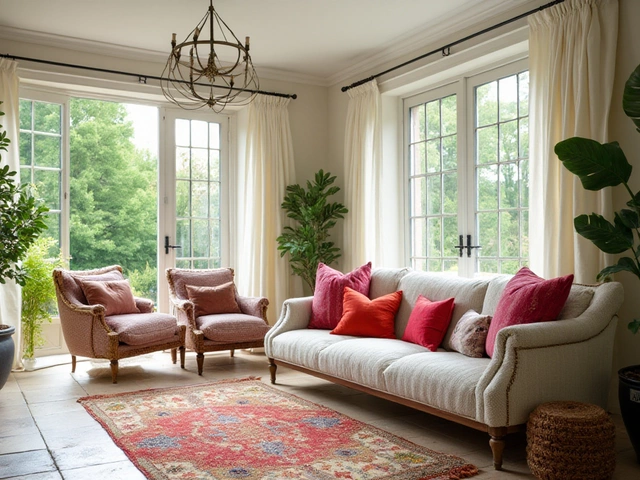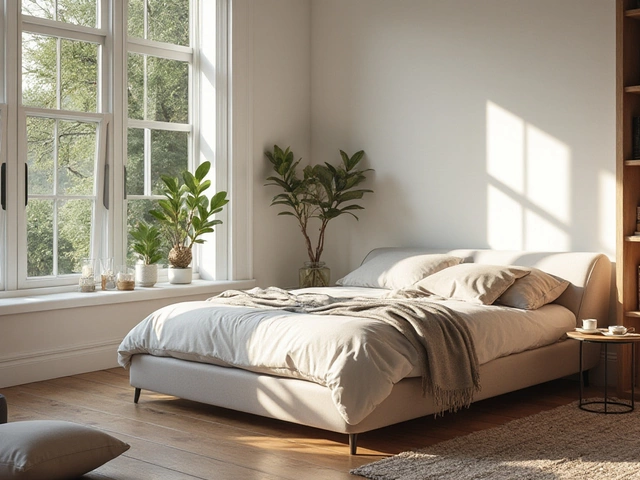 26
Jun,2025
26
Jun,2025
If you’ve ever spent hours scrolling through furniture websites, hunting for a comfy sofa or a dining table that screams your style, you know the struggle is real. There’s almost too much choice—classic hardwood makers, trendy startups, direct-to-your-door web stores, or big names everyone knows. And let’s be honest: nothing ruins a weekend like assembling a bookcase only to find it’s wobbly and the screws are missing. So, which company is actually the best for furniture? The answer isn’t cut and dry, but you’re about to get the real story—no fluff, just everything you really need to know.
The Biggest Furniture Brands and What Sets Them Apart
Walk into a mall or browse online, and names like IKEA, West Elm, Ashley Furniture, La-Z-Boy, and Pottery Barn pop up everywhere. Each one’s got its own flavor, and it helps to know who does what best.
IKEA is almost a rite of passage. You get modern, affordable pieces (that you WILL have to assemble—don’t say I didn’t warn you). It’s not heirloom quality, but if you change apartments every year or just want to save a buck, it’s tough to beat for basic stuff and storage. Just look at the Billy bookcase: over 60 million sold worldwide, and probably at least three fell on my best friend during college moves. Value? Absolutely. Durability? Less so.
Pottery Barn landed a different rep. Their stuff feels solid, with real wood and more traditional or rustic styles. Yes, you’ll probably pay more, but the build reflects that. People go for their sectionals, dining sets, and especially their kids’ furniture lines—safety standards there are top notch. Still, the price can be a hurdle for most first time buyers.
West Elm swings more modern, blending cool designs with a focus on eco-friendly manufacturing. They use FSC-certified wood, recycled materials, and promote fair labor, which matters a lot to people who want both style and a clear conscience. But style comes with a price tag, and comfort can sometimes take a back seat to looks.
Ashley Furniture is that slightly under-the-radar giant. They’re the world’s biggest home furniture manufacturer, supplying retail stores all across North America. Their lineup covers pretty much every style, and you’ll find both budget and mid-range pieces. Ashley gets mixed reviews—solid for value and selection, but sometimes behind on design trends and not the same quality as West Elm or Pottery Barn.
La-Z-Boy? There’s more than just the iconic recliners (you know you want one). They also have sofas, sleepers, and sectionals, often with infectious comfort and surprising customization choices.
Other honorable mentions: CB2 and Crate & Barrel for urban chic, Herman Miller for iconic office furniture, and Restoration Hardware for those with deep pockets and a love for heavy, luxe materials.
What Makes a Furniture Company Truly the Best?
Picking the “best” company is a lot like dating: it depends on what you’re looking for, what you can afford, and how picky you are. There isn’t a one-size-fits-all winner. Here’s what actually separates a great furniture brand from the rest:
- Quality: Is it solid wood, engineered wood, or particleboard? Real wood lasts longer and feels sturdier, but engineered options can be just right (and cheaper) for the short-term.
- Design: Does the store match your taste—classic, modern, industrial, boho, minimalist?
- Value for money: Are you paying for brand hype, or is it worth every penny?
- Customer Service: Are returns a nightmare? Do they make deliveries easy and fix issues promptly?
- Sustainability: Increasingly, shoppers want non-toxic finishes, responsibly-sourced wood, and transparent labor standards.
That’s a lot to juggle, and companies don’t always excel at every category. For example, IKEA crushes value and selection, but can’t compete with Room & Board’s quality. Pottery Barn offers timeless style, but sometimes stumbles with long shipping times. And some newer online-only brands—like Article or Burrow—offer clever modular sofas you can build in minutes, often shipping direct to your door for free.
Lucy and I once splurged on a West Elm midcentury sofa (the Hamilton), but ended up loving the customer service more than the couch. That counts for a lot when delivery gets messy and you need actual humans to help.

Tips for Smart Furniture Shopping: What To Check Before You Commit
There’s this stat floating around: the average American replaces their sofa every 7 years. Surprising? Maybe, but it shows how important it is to buy smart, not just cheap. Here’s what you want to check before you sign, swipe, or fall for a fluffy showroom pitch.
- Sit-Test: Never skip the butt test—even if you shop online, go to a store and try before buying. Reviews only say so much about feel.
- Material Details: Don’t get distracted by pretty covers—read descriptions! Look for kiln-dried hardwood frames for sofas, check for real stitching (not glue), and if you see “veneer” ask what’s underneath.
- Warranty and Return Policy: Life happens. Kids or pets happen more. Does your purchase have a stain warranty or at least a clear return window?
- Delivery and Assembly: Some companies white-glove it (set up and take away packaging). Others drop boxes at your door and wish you luck. Decide how much effort you’re willing to invest.
- Test For Real-Life Mess: Removable, washable covers for anything that will live in the living room? Total sanity saver. Water-resistant finishes for woods? Essential with kids, pets, or red wine drinkers.
I once had a table that claimed to be “scratch-resistant”—turns out that meant “cat-resistant.” There’s a difference. Always double-check the marketing lingo.
Affordable doesn’t always mean flimsy. Wayfair and Amazon offer tons of options, too, but since they’re marketplaces, quality can vary wildly. Stick to brands with legit reviews, and pay attention to verified buyers—not just pretty promo shots.
The Real Winners: Popular Brands by Category and Market Stats
Let’s break down which companies tend to come out on top in each category. No single brand wins everything, but you’ll spot clear standouts for certain rooms, price points, or buyer types.
| Category | Brand | Notable Feature | Price Range |
|---|---|---|---|
| Living Room Sofas | Burrow, IKEA, West Elm | Easy assembly, value, trendy designs | $$$ |
| Bedroom Furniture | Pottery Barn, IKEA, Nectar | Traditional & sturdy, flat-pack options, bed-in-a-box | $$$ |
| Dining Sets | Crate & Barrel, Ashley, Room & Board | Contemporary styles, all budgets, American made | $$ - $$$$ |
| Office Chairs | Herman Miller, Steelcase | Ergonomic, lifetime value | $$$$ |
| Outdoor | Outer, Polywood, IKEA | Recycled plastics, weatherproof, budget | $$ - $$$ |
Notice a theme? Big brands dominate mid- to high-end, but newer direct-to-consumer names are shaking things up with modular, shippable designs and radical transparency. Some of these are even offering 100-day return policies, which makes trial and error less risky.
If you value sustainability, keep an eye on brands like Joybird (they plant a tree for every order), Medley (nontoxic foams and glues), and Floyd (modular, recyclable materials). They’re not always the cheapest but excel on eco-friendly sourcing and honest supply chains.
Don’t forget the data. According to a 2024 report by Statista, online furniture sales in the U.S. hit $115 billion, with millennials and Gen Z buyers almost twice as likely to choose a first-timer brand over an old favorite. That tells you the market is wide open, and personal preference really does matter.
If you want the lowest possible price for student housing or first apartments, IKEA and AmazonBasics crush it. For mid-range, West Elm or Article deliver serious style. For lasting investment, think Pottery Barn, Room & Board, or the occasional splurge at Restoration Hardware if your wallet can handle it.
So, is there a single *best* furniture company? Not really. Your best bet is the one that matches your wallet, your taste, and your life—with a little room for coffee stains, pet claws, and, let’s face it, unexpected dance parties in the living room. Make your furniture work for you, not the other way around.




